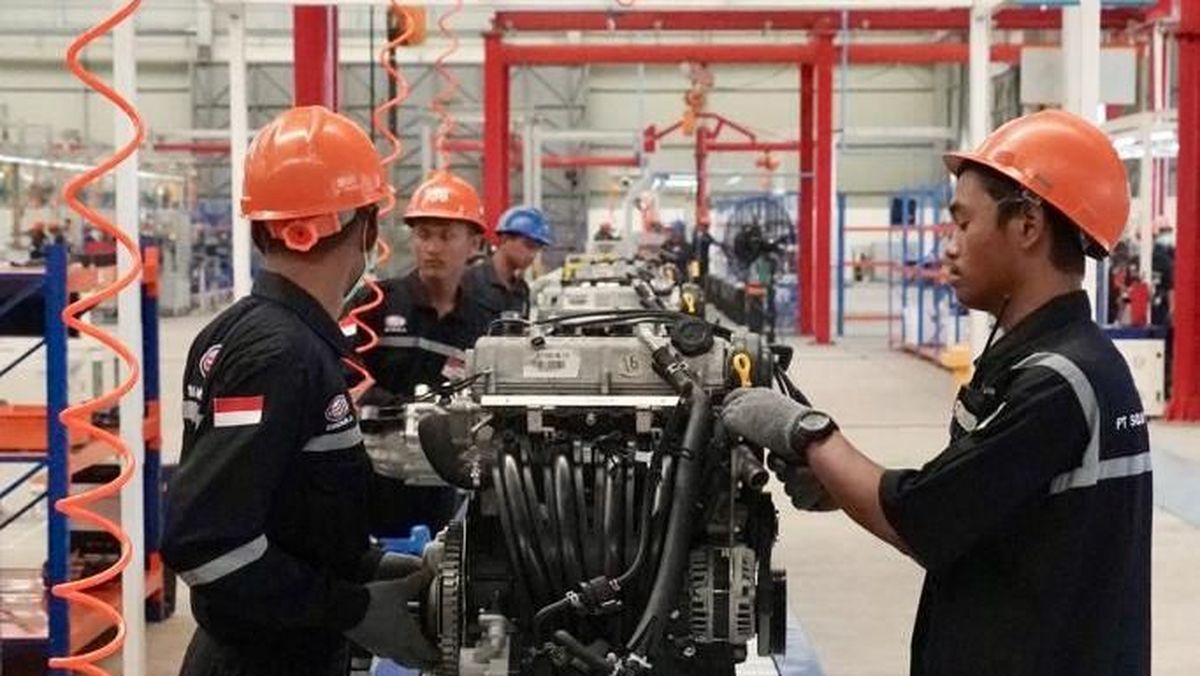Indonesia’s manufacturing sector continued to experience headwinds in July 2025 as the country’s Purchasing Managers’ Index (PMI) for manufacturing recorded a score of 49.2. This marks the fourth consecutive month that the index has remained below the neutral threshold of 50, signaling an ongoing contraction in industrial activity. The data reflects broader economic challenges, including weaker domestic demand, external uncertainties, and persistent global supply chain issues.
The Indonesia manufacturing PMI is a key economic indicator closely monitored by businesses, policymakers, and investors. A reading below 50 indicates contraction, while a score above 50 signals expansion. The recent figures raise concerns about the sustainability of industrial growth and its implications for the broader economy.
What Is Behind The Indonesia Manufacturing PMI Contraction?
Several factors have contributed to the contraction in Indonesia’s manufacturing PMI. Firstly, there has been a noticeable decline in new orders both from domestic and international markets. Businesses are reporting reduced demand for goods, driven partly by high interest rates and weaker consumer spending. This is consistent with global trends, as many economies are facing slower growth due to tightening monetary policies.
Another significant challenge is the ongoing disruption in global supply chains. Although supply chains have largely recovered from the pandemic era, geopolitical tensions and rising logistics costs continue to impact manufacturing operations. Indonesian manufacturers, particularly those reliant on imported raw materials, are experiencing higher input costs and delays.
Moreover, the slowdown in China, Indonesia’s largest trading partner, has impacted export-oriented industries. As China’s own manufacturing sector faces its challenges, demand for Indonesian goods such as textiles, electronics, and automotive components has declined.
Impact On Employment And Industrial Output
The contraction in Indonesia manufacturing PMI has direct consequences for employment and overall industrial output. Factories have reduced operating capacity in response to declining orders, leading to job cuts and shorter working hours for existing employees. Some companies are delaying expansion plans and reducing investments in new machinery and technology.
The weaker industrial output also affects related sectors such as logistics, warehousing, and raw material suppliers. This ripple effect underscores the importance of a healthy manufacturing sector for Indonesia’s broader economic stability.
In the short term, the lower manufacturing activity could put downward pressure on Indonesia’s GDP growth. Manufacturing accounts for a significant share of the country’s economic output, and sustained contraction in this sector often signals slowing momentum across the economy.
Policy Response And Economic Outlook
The Indonesian government is aware of the risks posed by the prolonged contraction in the Indonesia manufacturing PMI and is considering several policy measures to support the sector. These include providing targeted fiscal incentives for manufacturing firms, easing import regulations for essential raw materials, and accelerating infrastructure development to improve logistics efficiency.
Bank Indonesia, the country’s central bank, is also closely monitoring the situation. While interest rate hikes in previous quarters aimed to control inflation, they have also contributed to slower credit growth and dampened business investment. There is now an active debate about whether monetary policy should shift to a more accommodative stance to stimulate growth.
On the international front, Indonesia is exploring opportunities to diversify its export markets and reduce reliance on a few major trading partners. Trade agreements with countries in the Middle East, Africa, and South America are being negotiated to create new avenues for manufactured goods.
Despite the current challenges, analysts note that Indonesia’s manufacturing sector retains long-term potential, thanks to its relatively young workforce, improving infrastructure, and growing integration into global supply chains. However, the recovery will depend on how quickly demand rebounds and how effectively structural issues are addressed.
Business Sentiment And Future Expectations
Business sentiment among manufacturers remains cautious but not entirely pessimistic. While short-term prospects are challenging, many firms believe that technological upgrades and digital transformation can improve competitiveness in the long run. Companies are increasingly adopting automation, artificial intelligence, and green manufacturing practices to reduce costs and meet sustainability requirements.
The outlook for the Indonesia manufacturing PMI in the coming months will depend on several variables, including global commodity prices, exchange rate stability, and domestic consumer confidence. A gradual improvement in external demand, coupled with supportive policies, could help lift the index back above 50 later in the year.
However, if demand remains sluggish and cost pressures persist, the manufacturing sector may continue to face contractionary pressures well into 2025. Policymakers and businesses alike will need to monitor these developments carefully to prevent deeper structural weaknesses from emerging.
Conclusion
The Indonesia manufacturing PMI’s decline to 49.2 in July 2025 highlights the challenges facing the country’s industrial sector. With four consecutive months of contraction, the data serves as a warning sign for policymakers, investors, and businesses. Addressing issues such as weak demand, supply chain disruptions, and rising costs will be critical to restoring growth momentum.
While short-term pressures remain, the long-term potential of Indonesia’s manufacturing industry is still strong. Strategic policy interventions, diversification of export markets, and investment in technology could pave the way for recovery. For now, stakeholders are watching closely to see if upcoming economic measures and global market improvements can reverse the trend and push the Indonesia manufacturing PMI back into expansionary territory.
Read More






 Thursday, 27-11-25
Thursday, 27-11-25







